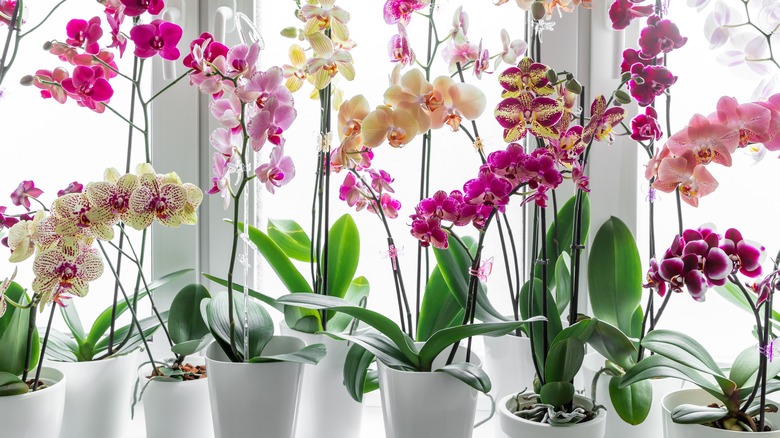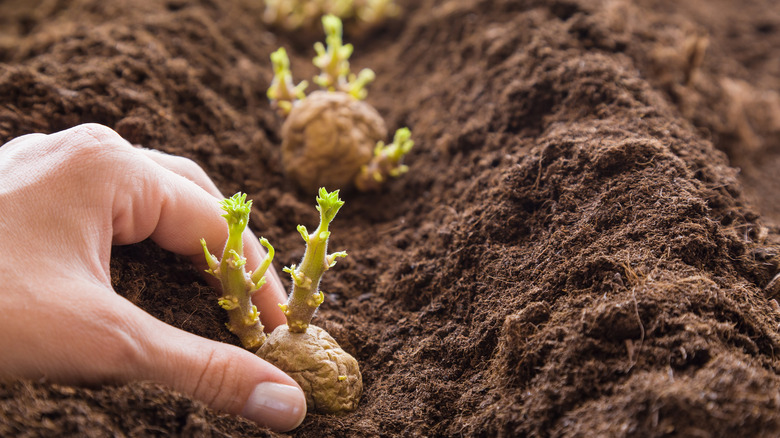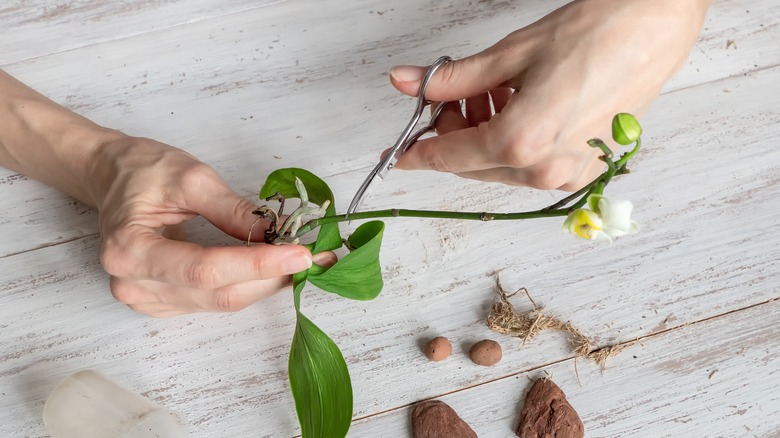The Unexpected Potato Hack That Makes Propagating Orchids A Breeze
Once you've learned how to successfully care for indoor orchids, you might be ready to grow your collection of these beautiful plants. However, instead of buying more, did you know that you can propagate your existing orchid into one or more smaller plants? When it comes to orchid propagation, many home gardeners swear by an unconventional tool: the potato. They use potatoes to make a fertilizer to help propagated orchids grow, and sometimes, they even propagate orchids inside of a potato.
Propagating orchids can be fun and rewarding. It helps you learn more about these enchanting plants and how they grow. It allows you to cheaply fill your home with orchids or give a dying houseplant new life. And if you have a particular orchid whose flowers you love, it will ensure all your plants produce the same beautiful blooms. Here, we'll cover how to harness the power of a humble potato to produce more of your favorite flowers.
The power of potatoes
Whether your orchid is an established plant or a propagated baby, it can benefit from vitamins and nutrients. Orchids prefer a dilute fertilizer fed regularly, as they are sensitive to fertilizer burn. That's why many home gardeners use natural fertilizers made from kitchen ingredients, like the residue in an empty milk carton. Potatoes contain several vitamins that are beneficial to plant growth, like potassium, calcium, and magnesium — and to unlock them, all you have to do is boil one or more potatoes.
It's essential to leave the skin on during boiling since it contains most of the potato's nutrients. Peeling the potatoes first and letting the skins soak in water for a few days may release even more. Drain the water into a container (you can still eat the potato) and let it cool completely. Then, you can use the potato water as a fertilizer for your orchid. Established orchids will benefit from this fertilizer, but new plants being propagated from cuttings will especially appreciate it.
How to propagate with potatoes
Potato water is also a favorite among home gardeners for propagating orchids via stem cuttings. This method works for monopodial orchids like phalaenopsis and vanda, but not just any part of the stem will do. The stem must have a dormant eye or node from which flowers will eventually grow. Cut a piece of stem with the dormant eye in the center, seal the ends in wax or pruning seal to prevent root rot, then remove the thin, triangular sheath over the eye.
To keep your cutting moist and happy, create a miniature greenhouse out of transparent plastic — reuse disposable cups, bottles, or takeout containers. Fill the container with a layer of bark and moss, dampen it with potato water, and loosely close the lid. The greenhouse will trap the moisture, while the potato's vitamins and nutrients will help the cutting grow into a strong, healthy plant.
Some gardeners take this a step further by drilling a hole in a potato, filling it with rooting hormone, and inserting the stem cutting. In theory, the potato provides a constant supply of moisture and nutrients, and the cutting's roots will emerge through the potato skin after a few weeks. Then the cutting—potato and all—can be planted in soil. It's not clear how well this unconventional method works, but it's worth a try if you're ready to level up your potato propagation game.


